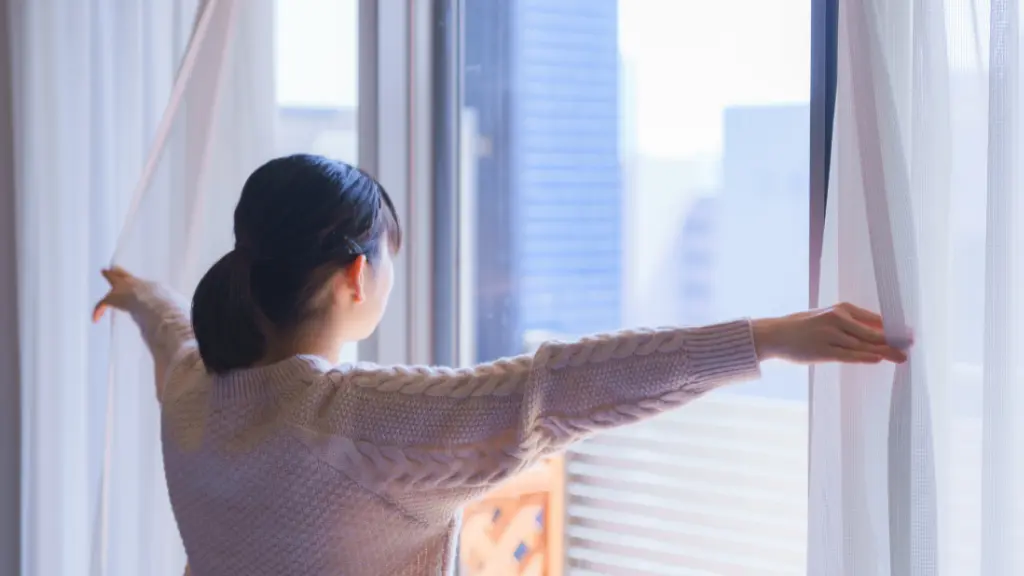The sun is often called the “natural source” of vitamin D. It’s common knowledge that spending time in the sun can help boost vitamin D levels, which is essential for bone health, immune function, and overall wellness. But what if you’re inside, with the sun streaming through your windows?
Does sunlight through glass provide enough vitamin D? Here, we’ll look at the science behind UV rays, glass, and how your body produces this vital vitamin.
You May Also Like: Why Can’t I Get This Song Out of My Head?
What Is Vitamin D and Why Is It Important?
Vitamin D is a fat-soluble vitamin that plays a crucial role in your health. It’s sometimes called the “sunshine vitamin” because our bodies produce it when exposed to sunlight. This vitamin is essential for several bodily functions:
- Bone Health:
Vitamin D helps the body absorb calcium, which is essential for bone growth and strength. Without it, bones can become weak, leading to conditions like osteoporosis. - Immune Function:
Vitamin D supports the immune system, helping it fight off infections and inflammation. - Mood Regulation:
Studies suggest that vitamin D may play a role in mood regulation, potentially reducing symptoms of depression and anxiety. - Cell Growth and Repair:
Vitamin D aids in cell growth and tissue repair, contributing to overall wellness and longevity.
The body’s primary source of vitamin D is sunlight, specifically the ultraviolet B (UVB) rays that interact with the skin. However, sunlight can only produce vitamin D effectively under certain conditions. So, can it be produced through glass? Let’s find out.
How Does the Body Make Vitamin D?
When UVB rays from the sun hit the skin, they trigger a chemical reaction that converts cholesterol into vitamin D3. This form of vitamin D is then transported to the liver and kidneys, where it is converted into the active form that the body uses. The process is natural, efficient, and highly effective, provided the skin is exposed to direct sunlight.
Factors such as skin type, age, time of day, and location can influence how much vitamin D is produced. For example, people with darker skin produce less vitamin D than those with lighter skin, as melanin reduces UVB absorption.
Can Sunlight Through Glass Provide Vitamin D?
Unfortunately, sunlight through glass does not provide vitamin D. Most glass windows block UVB rays while allowing UVA rays to pass through. Here’s the difference:
- UVB Rays: These rays are responsible for vitamin D production in the skin. However, standard window glass is designed to block almost all UVB rays, which means you won’t get the benefits of vitamin D from sunlight that has passed through glass.
- UVA Rays: These rays can penetrate glass and can cause skin damage over time. UVA rays are associated with skin aging and an increased risk of skin cancer but do not contribute to vitamin D production.
Why Glass Blocks UVB Rays
Glass is made to block UVB rays for a few reasons. UVB rays are the rays responsible for sunburn, and exposure can lead to health risks, including skin cancer. By blocking these rays, glass protects people indoors from sunburn and potential skin damage.
Additionally, UVB rays can damage furniture, flooring, and other materials inside homes and buildings, causing them to fade over time. By filtering out UVB rays, glass helps protect not just people but also the interior of homes and offices.
The Health Impact of Reduced Vitamin D Levels
Since sunlight through glass doesn’t produce vitamin D, people who spend a lot of time indoors are at risk of vitamin D deficiency. This is especially true in areas with long winters, where sunlight exposure may be limited for months at a time.
Vitamin D deficiency can lead to several health issues:
- Bone Health Problems:
Low vitamin D levels can cause weak bones, making people more prone to fractures and osteoporosis. - Increased Risk of Illness:
Deficiency in vitamin D can weaken the immune system, making it harder to fight infections like colds and the flu. - Mood Disorders:
Some studies suggest a link between low vitamin D levels and mood disorders such as depression. - Fatigue and Weakness:
Vitamin D plays a role in muscle health, so low levels can lead to general fatigue and muscle weakness.
Alternative Ways to Get Vitamin D
If you’re often indoors or live in a place with limited sunlight, there are ways to boost vitamin D levels without direct sun exposure.
- Go Outdoors for Direct Sunlight:
Spending just 10-30 minutes in direct sunlight several times a week can be enough to maintain healthy vitamin D levels. Expose larger areas of skin, such as arms and legs, to maximize production. - Vitamin D-Rich Foods:
Certain foods are rich in vitamin D, including fatty fish (like salmon and mackerel), egg yolks, and fortified foods like milk, orange juice, and cereals. - Supplements:
Vitamin D supplements are widely available and can be a reliable source if you’re not getting enough from sunlight or food. Always check with a healthcare provider to determine the right dosage. - UV Lamps and Bulbs:
Some people use UVB lamps to supplement vitamin D. These lamps emit UVB rays similar to sunlight and can be effective, though it’s essential to use them safely to avoid skin damage.
How Much Vitamin D Do You Need?
The recommended daily allowance (RDA) for vitamin D varies by age and individual health needs. Generally:
- Adults (ages 19-70): 600 IU (International Units) per day
- Adults (over 70): 800 IU per day
- Children and Adolescents: 600 IU per day
For those with vitamin D deficiencies, healthcare providers may recommend a higher dose temporarily to bring levels back to normal.
Are There Any Risks with Too Much Sunlight?
While some sunlight is beneficial for vitamin D, too much exposure can be harmful. Overexposure to UVA and UVB rays can lead to skin cancer, sunburn, and premature skin aging. Therefore, balance is key. If you’re spending extended periods in the sun, apply sunscreen and wear protective clothing to minimize skin damage.
Balancing Sunlight and Vitamin D
It’s crucial to strike a balance between safe sun exposure and vitamin D needs. Here are some practical tips:
- Spend Time Outdoors Regularly:
Aim for moderate sun exposure a few times a week, especially during midday when UVB levels are at their peak. - Rotate Sun and Shade:
If you’re outside for extended periods, alternate between sun and shade to prevent overexposure while still reaping the benefits of sunlight. - Combine Sunlight with Other Sources:
Complement your sunlight exposure with dietary sources of vitamin D or supplements, especially during months when sunlight is limited. - Consult with a Doctor:
If you’re concerned about vitamin D levels, consult a healthcare provider who can recommend testing or supplementation.
Conclusion
While sunlight through glass can light up a room, it won’t provide vitamin D. The UVB rays needed for vitamin D production cannot penetrate standard glass, which means that sun exposure through a window won’t help raise your vitamin D levels.
To maintain healthy vitamin D levels, aim for direct sun exposure, eat vitamin D-rich foods, or consider supplements if needed. With the right balance, you can enjoy the benefits of sunlight safely and effectively support your body’s vitamin D needs.










